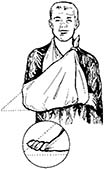
Figure 4-2. Square knots tied away from casualty.
Before beginning first aid procedures for a fracture, gather whatever splinting materials are available. Ensure that splints are long enough to immobilize the joint above and below the suspected fracture. If possible, use at least four ties (two above and two below the fracture) to secure the splints. The ties should be square knots and should be tied away from the body on the splint. Distal pulses of the affected extremity should be checked before and after the application of the splint.
WARNING
Unless there is immediate life-threatening danger, such as a fire or an explosion, DO NOT move the casualty with a suspected back or neck injury. Improper movement may cause permanent paralysis or death.
WARNING
In a chemical environment, DO NOT remove any protective clothing. Apply the dressings and splints over the garments.
NOTE
With the presence of an obvious deformity, do not make the casualty move extremity.
WARNING
Casualties with fractures of the extremities may show impaired circulation, such as numbness, tingling, cold or pale to bluish skin tone. These casualties should be evacuated by medical personnel and treated as soon as possible. Prompt medical treatment may prevent possible loss of the limb.
WARNING
If it is an open fracture and the bone is protruding from the skin, DO NOT ATTEMPT TO PUSH THE BONE BACK UNDER THE SKIN. Apply a field dressing over the wound to protect the area.






WARNING
The swathe should not be placed directly on top of the injury, but positioned either above or below the fracture site.
